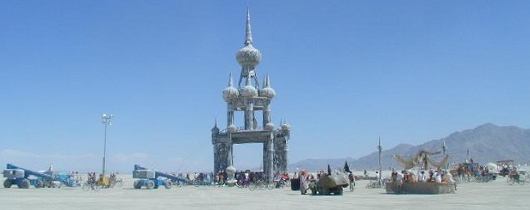The Future Is Here by Mark Stone
September 2012. Last week I watched the U.S. Open Final. It was a thrilling match, and I'm happy to see Andy Murray finally break through for his first major championship. But the means by which I watched the final was just as exciting to me. Invoking the words of William Gibson, "The future is already here — it's just not very evenly distributed."
I turned on the TV Sunday morning expecting to see the men's final, and realized that in fact the semi-final between Ferrer and Djokovic had been delayed, which meant the final would be pushed to Monday. I felt disappointed. I assumed they'd play first thing on Monday morning, and therefore I'd miss the match since I'd be on my way to work.
Fast forward to late afternoon Monday. I'm wrapping up my work day, and a friend posts to my Google+ stream, "Murray just took the first set." And that's my first "future is here" point: for most major news developments, I get information much faster through my social network than any other source. Equally important, I don't have to consciously seek the information; my social network naturally brings it to me.
Now I'm scrambling to figure out how I can watch the match. I remember that a friend (again on Google+) had praised the U.S. Open Android app. So I pull my Nexus 7 tablet out, download and install the app, and in a matter of minutes I'm watching the second set live with the tablet propped up next to my monitor while I finish up work. Another "future is here" moment: the app is just great. First serve percentage, points won at the net, head to head record, and a host of other tennis geek stats are all there for me to drill into. I don't have to wait for a color commentator to feed me the information they think I might want. I am in charge of the "color" I want to apply to the match.
Shortly after the start of the third set its time for me to head home. My commute is a long one (about 2 hours), but that's because its on public transportation: bus from Bellevue to Kent, train from Kent to Sumner, shuttle from Sumner to Bonney Lake where my car is parked. The Nexus 7 doesn't have any kind of cellular connection; it is strictly wifi. But my Android phone (LG G2X) can act as a wireless hot spot, and my carrier (T-Mobile) permits this at no extra charge under my plan. So I tether my Nexus 7 tablet to my phone, and head to the bus, where I continue watching the match. An aside here: I'm incredibly grateful that the AT&T - T-Mobile merger was nixed, because we are seeing real competition among U.S. carriers and its a good thing. There is real differentiation among plans that a carrier offers, and between plans offered by different carriers. The free market at work.
The whole time I'm riding the bus I'm watching the match. While standing on the platform waiting for the train, I'm watching the match. On the train, and then on the shuttle, where Murray closes the 5th set. The picture quality flickers in a few places, and I get a few frozen frames followed by skips as my phone tries to maintain the data connection jumping from cell to cell, but overall the quality of the viewing experience was remarkably high. Finally the picture completely freezes up in the middle of post-match coverage, and I realize my phone has shut down with a completely drained battery. When I get to car I plug my phone into the charger, plug the audio into my car stereo, and continue with the "radio" (audio only) version of the app, just in time to hear the post-match interviews with the players.
Now almost a week later I'm still stunned by the overall experience. No television was required. No desktop computer. The depth of commentary and associated data was under my control. No commercial interruptions. While this experience is not yet universal for all forms of content, it is the experience that media companies need to prepare for and adapt their business models to. Because the future is here.


